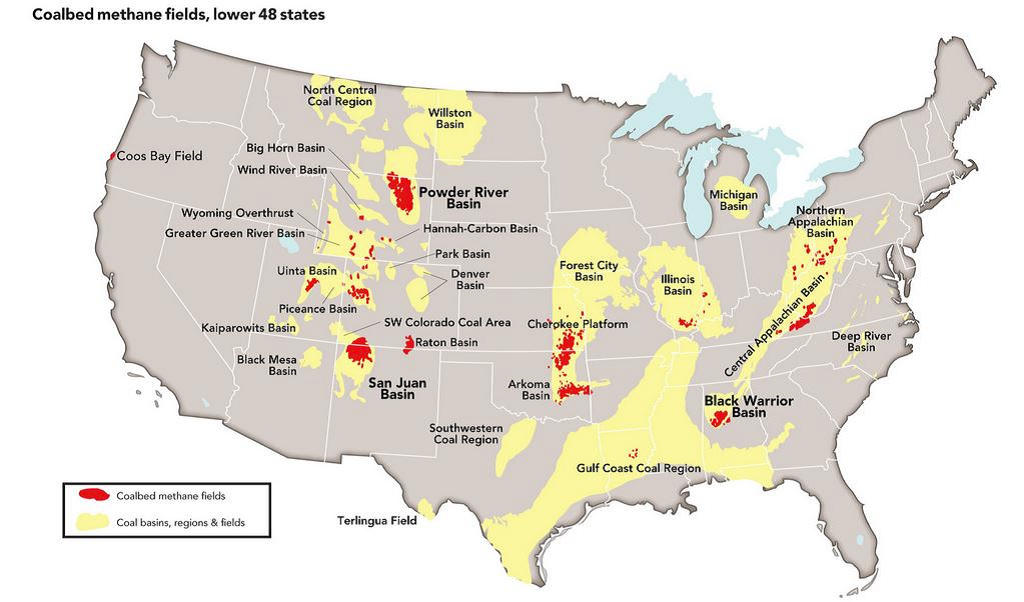
- Project 1: Australia-USA lessons & comparisons
- Project 2 Groundwater data investigation for Pavillion, Wyoming, USA
Australia-USA lessons and comparisons
Two international research projects were conducted in the USA.
PROJECT 1: AUSTRALIA-USA LESSONS & COMPARISONS
While large-scale coal seam gas (CSG) development is a recent phenomenon in Australia, the industry has a long term history in both Canada and the USA (where CSG is known as coal bed methane or CBM).
The project was undertaken as there continues to be a significant level of community concern regarding the potential environmental impacts of the CSG industry in Australia.
This project reviewed the literature on the environmental impact of coal seam gas development in Australia, Canada and the USA. The US CBM industry has nearly four decades of experience and extensive studies have been done on the environmental impact of the industry. Analysis of the incidents and impacts documented in these reports provide insights into the likely impact of CSG development in Australia over the next four decades. The research team will evaluate the likelihood of significant environmental impacts occurring in Australia in the future based on this analysis of international experience.
The review focused on each of the main potential environmental impacts of natural gas development from coal—produced water disposal; perturbation of groundwater/surface water systems; chemical contamination of aquifers; methane contamination and migration in shallow groundwater; noise pollution; subsidence; impacts on the landscape and ecology; air contaminants; and greenhouse gas emissions. In each case the longer history, much higher cumulative and annual gas production for the USA and Canadian CBM industries allowed the researchers to speculated about potential impacts of CSG over the next four decades in Australia.
PROJECT 2: GROUNDWATER DATA INVESTIGATION FOR PAVILLION, WYOMING, USA
NOTE: This project was discontinued following the release of the Pavillion, Wyoming Area Domestic Water Wells Final Report and Palatability Study following a comprehenisve investigation by the Wyoming Department of Environmental Quality. A link to the final report and is provided below.
Hydraulic fracturing (fraccing) is a technique used to enhance gas flow from CSG wells in areas where the coal seams have low permeability. It involves injecting a mix of water and sand (typically 99%) and 1% industrial chemicals into the coal seam under high pressure in order to create small fractures that allow the gas to flow more readily to the well. Media attention has focused on the potential impacts of fraccing and many community members have expressed concern that valuable groundwater resources will be negatively impacted by this technique.
Background: Groundwater contamination in the Pavilion area of Wyoming, USA was investigated by the USA Environmental Protection Agency (EPA) to determine if natural gas wells and fraccing had adversely influenced groundwater quality. The preliminary report from this EPA study indicated that fracturing chemicals had contaminated groundwater and this outcome has been regularly used as an example of the negative fraccing impacts. However, the methodology used and the outcomes obtained have been the subject of scientific dispute. As a result further sampling and chemical analyses were undertaken by the United States Geological Survey (USGS), but data interpretation has not been completed. The EPA has discontinued its involvement with the investigation without providing any further information regarding the accuracy of the preliminary report and the scientific peer review process for the report will not be completed.
Consequently, complete information has not been presented to the public or to regulatory agencies. Further analysis of both the EPA report and subsequent USGS investigation is required to clarify if fraccing chemicals have been found in groundwater or if the contamination is due to chemicals from other human activities. This project will conduct a review of all scientific information related to the Pavilion groundwater investigations to produce a complete assessment of the incident and its causes.
NOTE: This project was discontinued following the release of the Pavillion, Wyoming Area Domestic Water Wells Final Report and Palatability Study following a comprehenisve investigation by the Wyoming Department of Environmental Quality. A link to the final report and appendices is provided below.
PROJECT OUTPUTS
Project 1
Project 2
- Water wells final report: Pavillion, Wyoming Area Domestic Water Wells Final Report and Palatability Study
|
